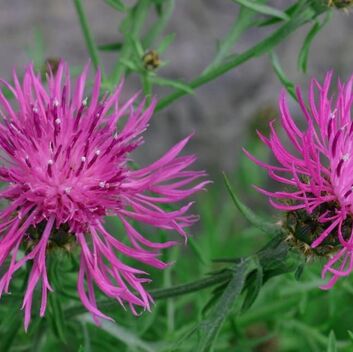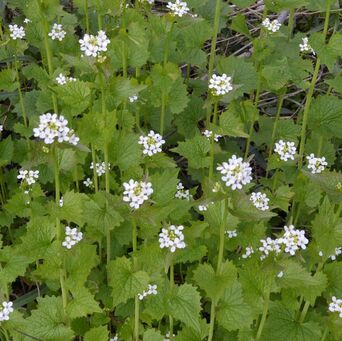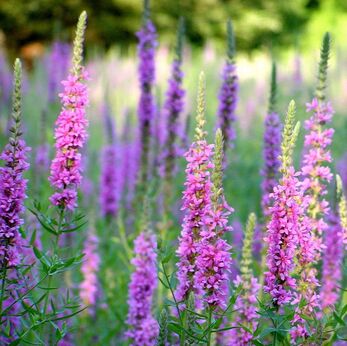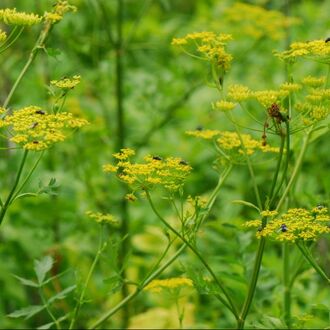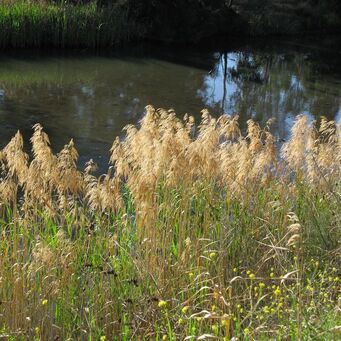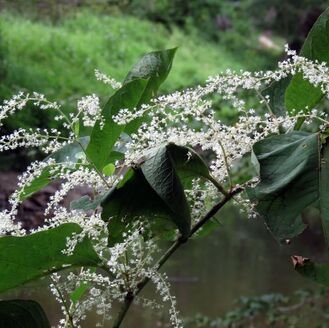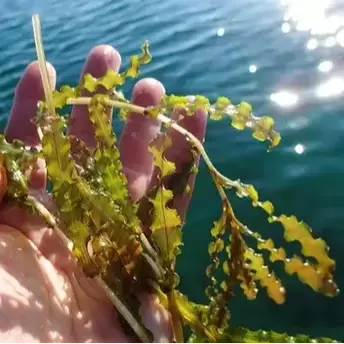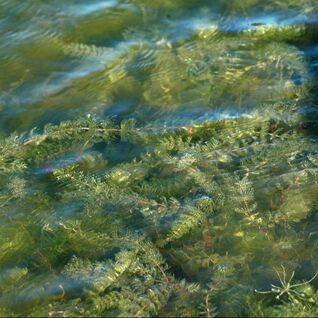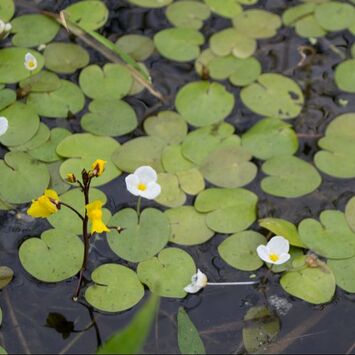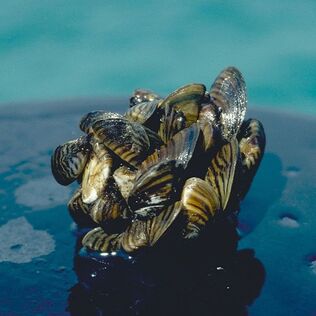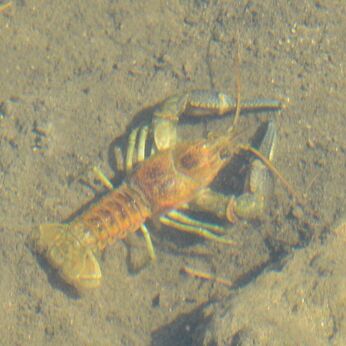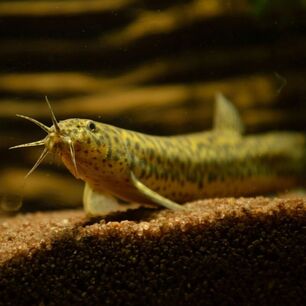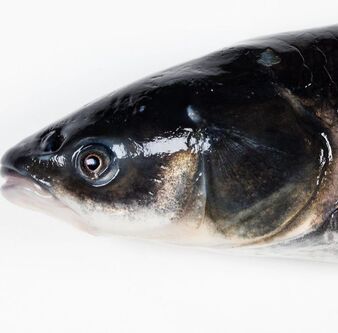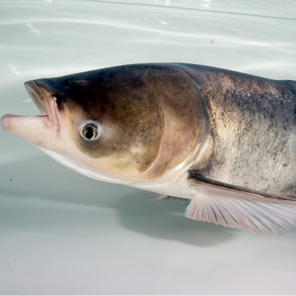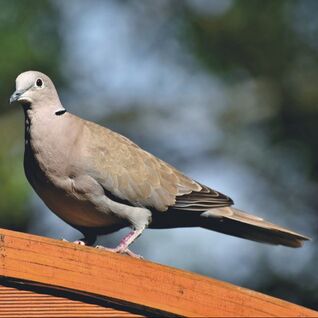What are invasive species?
Invasive species are a non-native species that take over a habitat, resulting in reduced native flora and fauna, reduced diversity, loss of habitat, soil erosion, the introduction of toxins, and more. Many invasive species have no natural enemies to limit their populations, making them especially hard to control or contain. In short: once they’re there, they’re very hard to get rid of. For this reason, prevention is especially critical. While invasives are sometimes spread by wildlife, they are most often introduced to areas by humans—either unintentionally or deliberately.
How do invasive species spread?
The major pathways through which invasive species are transferred are:
Why should we care?
Invasive species can have devastating ecological impacts, including drastically reduced biodiversity and the disappearance of native species. However, humans are also affected. The presence of invasive species can have a negative effect on the economy, devaluing land, interrupting sport and commercial fishing, hindering outdoor recreational activities, damaging agriculture, and so much more.
What can we do to limit the spread?
Fortunately, there are many ways to help prevent the spread of invasive species, including:
Invasive species are a non-native species that take over a habitat, resulting in reduced native flora and fauna, reduced diversity, loss of habitat, soil erosion, the introduction of toxins, and more. Many invasive species have no natural enemies to limit their populations, making them especially hard to control or contain. In short: once they’re there, they’re very hard to get rid of. For this reason, prevention is especially critical. While invasives are sometimes spread by wildlife, they are most often introduced to areas by humans—either unintentionally or deliberately.
How do invasive species spread?
The major pathways through which invasive species are transferred are:
- Firewood. Insects can easily hide in the bark of cut logs without being detected.
- Transportation corridors. These include highways, roads, and railways.
- Machinery. Invasive insects and plants can attach to cars, trucks, ATVs, farm equipment, and other machinery that can transport them long distances.
- Shipping cargo and containers. Both aquatic and terrestrial invasives can be transported internationally on ships and planes.
- Agriculture. Invasive plants can contaminate seed mixes or other farm products.
- Bait. Recycling fishing bait in different water bodies is a common cause of aquatic invasive spread.
- Boots and gear. Invasive plants and insects and attach to shoes, clothes, and gear of hikers and campers.
- Pet shops. Many invasive animals have started as exotic pets that were then released or escaped into the wild.
Why should we care?
Invasive species can have devastating ecological impacts, including drastically reduced biodiversity and the disappearance of native species. However, humans are also affected. The presence of invasive species can have a negative effect on the economy, devaluing land, interrupting sport and commercial fishing, hindering outdoor recreational activities, damaging agriculture, and so much more.
What can we do to limit the spread?
Fortunately, there are many ways to help prevent the spread of invasive species, including:
- Using only local firewood. Ideally, you should burn firewood within ten miles of where it was grown. Details about Michigan’s laws regarding firewood movement can be found here.
- Cleaning your boat and/or fishing equipment and allowing them to dry when moving between waterbodies. Inspect your boat thoroughly, dispose of unused live bait, and drain live wells upon leaving a waterbody.
- Cleaning your bike, ATV, or other offroad vehicles before and after going on a trail.
- Staying on designated nature trails and paths.
- Brushing your footwear before and after hiking on nature trails and paths.
- Planting species that are native to your area. The Schoolcraft Conservation District’s annual tree and native plant sales are wonderful opportunities to do this! You can also discover more species native to your area here.
- Reporting any invasive species that you see to your local conservation district, the Midwest Invasive Species Information Network, or the Michigan Department of Agriculture and Rural Development. See the guide below for help in identifying some of the Upper Peninsula’s more common ones.
Common Invasive Species of Michigan*
|
Spotted Knapweed Habitat: Often found in open fields or scrub-shrub areas with poor soils or sands and also in disturbed areas, hay fields and pastures. Identification: An herbaceous, bushy, perennial plant growing 2-3 feet. Elongated, bluish- or grayish-green leaves divided into lance-shaped lobes. Pinkish-purple flowers are thistle-like and bloom from July through September. Long, stout tap-root can send shoots to start new plants. Seeds are carried on fine, white tufts emerging from the flower base. |
|
Garlic Mustard Habitat: Garlic mustard thrives in wooded areas and can tolerate deep shade, partly because it emerges and blooms before trees develop leaves in spring. Identification: An herbaceous, flowering plant that smells like garlic when crushed. Heart-shaped basal rosettes (leaves) appear in year one at ground level. In the second year, stems shoot up (1-4 feet) and develop flowers and seeds. Leaves become more toothed and triangular in shape. Clusters of tiny, white, 4-petaled flowers bloom in early spring. Seed pods are green, long and narrow and look like stems – turning brown in fall. |
|
Purple Loosestrife Habitat: Purple loosestrife thrives along roadsides and in wetlands. While seeds can germinate in water, establishment is much more successful in moist substrate that’s not flooded. It prefers full sun but can tolerate shade. Identification: Perennial herb with a woody, square stem covered in downy hair. Height varies from 4 to 10 feet. Leaves are arranged in pairs or whorls. Magenta flower spikes with 5-7 petals per flower are present for most of the summer. |
|
Wild Parsnip Habitat: Wild parsnip tolerates a range of soils and moisture levels but requires sun. Often found in open areas, pastures, fields, roadsides and disturbed areas. Identification: Biennial flowering herb on a single stem that grows to 5 feet tall. Leaves consist of 2 to 5 pairs of leaflets that grow across from each other along the stem, and one diamond-shaped leaflet on the end. Leaflets are toothed and often shaped like a mitten. Yellowish green flowers form umbrella-shaped clusters 4 to 8 inches across. Flowers bloom in June and July before turning white. |
|
Phragmites (Common Reed) Habitat: Often found in ditches, swales, wetlands and on stream and pond banks. Identification: Warm-season perennial grass with a rigid, hollow stem. Height ranges from 6-13 feet. Leaves are flat, smooth, and green to grayish-green (as opposed to the yellow hue of native phragmites). Flowers grow as dense branched clusters on the end of each stem that are open and feathery at maturity. |
|
Giant Knotweed Habitat: Can be found in moist soils in sunny areas along roadsides, disturbed fields or vacant lots and along streams or riverbanks. Identification: Perennial, herbaceous shrub that can grow over 12 feet high. Hollow stalks are light green, smooth and swollen at the nodes, resembling bamboo. Flowers are arranged in spikes near the end of the stem are small, numerous and greenish-white in color. Flowers do not extend past the length of the leaves. Flowers bloom in August and September in Michigan. Leaves are 6-14 inches long, heart-shaped at the base and have fine hairs on the underside. |
|
Curly-Leaf Pondweed Habitat: Inhabits ponds, lakes, and slow-moving streams. Brackish, alkaline or eutrophic conditions less than 3 meters in depth are preferable, although it can grow in waters up to 12 meters deep. Identification: Leaves are dark green with wavy, serrated margins. Submersed, perennial herb with thick roots. Can reach 2 meters in length. Flowering spike grows above water’s surface. Starts growing in fall and winter, flowers in late spring, dies in late July. |
|
Eurasian Milfoil Habitat: Inhabits water bodies ranging from fresh to brackish. Areas that have been disturbed are prime habitats for this species. Very resistant and can overwinter in frozen lakes and ponds. Identification: Emergent, herbaceous aquatic plant. Stems are whitish-pink to reddish-brown. Leaves are greyish-green with finely divided pairs of leaflets that are ½-2 inches long, giving the plant a feathery appearance. Leaves arranged in whorls of 3-6. Yellow or reddish flower with 4 parts on a projected spike sitting 2-4 inches above water. Usually 3-10 feet tall with a maximum of 33 feet. |
|
European Frog-Bit Habitat: European frog-bit is most often found in slow moving rivers, sheltered inlets, ponds, bayous and ditches. Prefers waters rich in calcium with no wave action. Identification: Free-floating aquatic plant sometimes rooted in shallow water. Leaves are small, 0.5-2.5 inches, round to heart-shaped, with a purple-red underside. Leaves form a rosette. Single flower with three white petals and yellow center may be visible from June to August. Roots can grow up to 10 inches long and become tangled beneath the water surface. |
|
Zebra Mussel Habitat: Freshwater lakes, rivers, and reservoirs. Zebra mussels require hard substrates to latch onto, while quagga mussels can attach to hard or soft substrates in water depth up to 130 meters. This leads to a less restricted range of suitable habitat than for the zebra mussel. Identification: Average length of a zebra mussel is about 1 inch. Zebra shells are triangular in shape and can sit flat on the ventral side. Colors vary - shell color ranges from almost white to tan or brown in both species, usually have darker concentric rings but are not always pronounced. |
|
Rusty Crayfish Habitat: Permanent water bodies (lakes, streams, wetlands) with cover of rocks, logs or trees. Rusty crayfish do not burrow like other crayfish. Identification: Lobster-like, brown body, up to 6 inches with claws. Oversized claws have an oval opening when closed and black bands at tips. Mature crayfish have a dark, rusty spot on each side of the carapace. |
|
Oriental Weatherfish Habitat: These fish are often found in shallow, low-gradient waters with muddy or silty substrates. They can survive in oxygen-poor waters and through long droughts by burrowing into soft substrates. Identification: Eel-like body that’s brown with greenish grey-brown marbled marking on the dorsal side and pale silver coloration on the ventral side. Small, narrow mouth with thick and fleshy lips and six barbels. Body length may reach 28 centimeters, but averages are smaller. Female is often longer than the male. |
|
Black Carp Habitat: Large rivers and lakes but require large rivers for reproduction (water current keeps their eggs from sinking to the bottom). Identification: Large bodied-can reach 6 feet in length and 150 pounds. Elongated, laterally compressed body. Blackish-brown scales grading to bluish gray to almost white belly. Pointed head with a flattened anterior (front) portion. Young individuals look very similar to grass carp (another invasive species) but have pharyngeal teeth. |
|
Bighead Carp Habitat: Bighead carp are able to establish populations in water bodies with a wide range of temperatures and at relatively low salinity levels. Spawning generally occurs following a flood event in large, turbulent rivers. Identification: Up to 5 feet long and weighing up to 90 lbs. Large head with a toothless, downturned mouth. Eyes sit below the mouth. Adults are dark gray with dark blotches. Keel between anal and pelvic fins. |
|
Grass Carp Habitat: Preferred habitat for grass carp are quiet, shallow waters. When temperatures decrease, deeper waters are used. Grass carp are tolerant to low levels of salinity, so they may occasionally enter brackish water. Identification: Can reach lengths of more than 5 feet, weight can reach more than 80 lbs. Eyes sit even with the mouth. Large scales that appear crosshatched. Shorter dorsal fin than goldfish or common carp. |
|
Eurasian Collared Dove Habitat: Collared doves live on farmlands, open country, and wood edges in suburban and urban areas. They appear to thrive in areas with a combination of open ground and trees. Identification: Mostly gray with white upper body. Black collar on the back of its neck. Slender black bill. Deep red iris of the eye. Broad, squared tail with black base. Dark red legs and feet. |
Descriptions from Michigan.gov.
